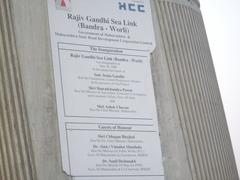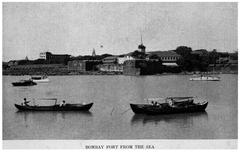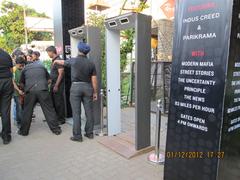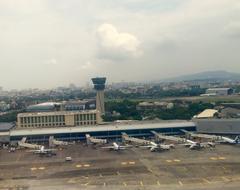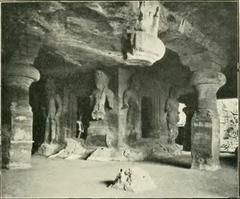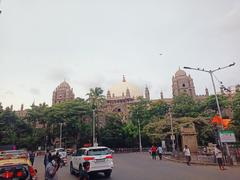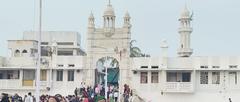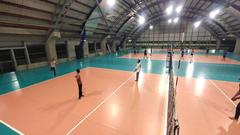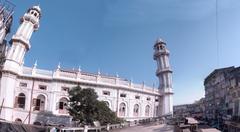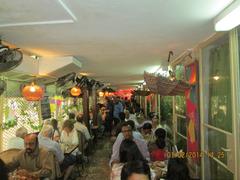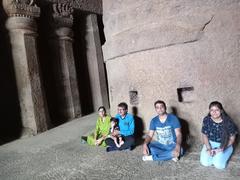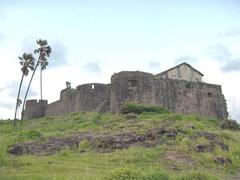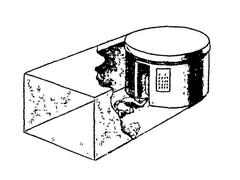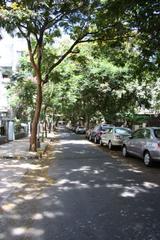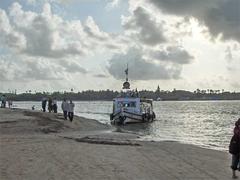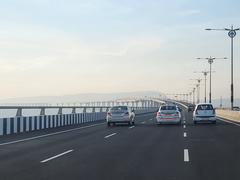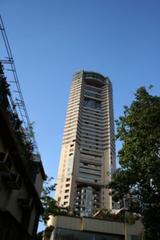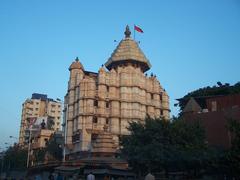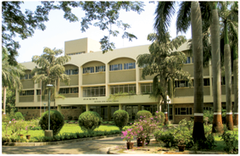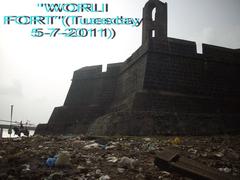SNDT Women’s University Mumbai: Visiting Hours, Tickets, and Historical Sites Guide
Date: 14/06/2025
Introduction
SNDT Women’s University, officially known as Shreemati Nathibai Damodar Thackersey Women’s University, stands as a pioneering force in women’s education in India and South-East Asia. Established in 1916 by social reformer Bharatratna Dhondo Keshav Karve, the university’s origins trace back to an ashram for widows and destitute women near Pune. Over more than a century, it has evolved into a multi-campus institution with significant sites in Mumbai’s Churchgate and Juhu areas and a heritage campus in Pune. Its campuses are not only centers of academic excellence, but also bearers of rich cultural and architectural heritage, making SNDT a prominent landmark in Mumbai’s educational and historical landscape (topuniversities.com; anuraag-shukla.medium.com).
Visitors to SNDT can experience a harmonious blend of colonial-era and modern architecture, discover lush green spaces, and enjoy state-of-the-art academic facilities. The university is also a vibrant cultural hub, hosting an array of events and festivals that reflect Mumbai’s diversity (sndt.ac.in; Careers360). This comprehensive guide provides prospective visitors, students, and history enthusiasts with detailed information on visiting hours, campus access, guided tours, ticketing, accessibility, academic environment, and nearby historical sites such as the Gateway of India and Marine Drive (sndt.ac.in; feminisminindia.com).
Table of Contents
- Introduction
- History and Cultural Significance
- Campuses and Architecture
- Visiting Hours and Entry
- Guided Tours and Accessibility
- Campus Facilities and Highlights
- Academic Programs and Research
- Cultural Life and Events
- Notable Alumni and Community Impact
- Visitor Experience and Practical Tips
- Nearby Historical Sites
- FAQs
- Visual and Media Resources
- Useful Links
- Conclusion and Call to Action
History and Cultural Significance
SNDT Women’s University is the first women’s university in India and South-East Asia. Its roots go back to 1896, when Karve established an ashram in Hingne, near Pune, to educate widows and destitute women—an act that challenged prevailing social norms (topuniversities.com). In response to growing demand, the university was formally founded in Pune in 1916, with the first five women graduating in 1921 (anuraag-shukla.medium.com).
Despite early challenges, SNDT expanded to Mumbai with the main administrative headquarters at Churchgate and a major campus in Juhu. Today, it oversees a network of affiliated colleges across Maharashtra, Assam, Uttar Pradesh, Bihar, Madhya Pradesh, Surat, and Goa (sndt.ac.in; topuniversities.com). The university’s motto, “An enlightened woman is the source of infinite strength,” underscores its mission to democratize access to education and empower women from all backgrounds (uat.sndtarts.ac.in).
SNDT pioneered women’s studies in India, establishing a dedicated research unit in 1974, which became a full-fledged center in 1985 (feminisminindia.com). Its outreach and extension programs address women’s health, legal rights, entrepreneurship, and leadership (sndt.ac.in).
Campuses and Architecture
Churchgate Campus
Located at 1 Nathibai Thackersey Road, Churchgate, Mumbai, the Churchgate campus is the administrative heart of SNDT. It features colonial-era architecture with high ceilings, arched windows, and stonework emblematic of Mumbai’s institutional heritage. Notable buildings include the PVDT College of Education for Women, the university library, and several heritage structures.
Juhu Campus
Established in 1964, the Juhu campus offers modern academic facilities and green, open spaces. It houses the Sir Vithaldas Thackersey College of Home Science and Usha Mittal Institute of Technology (UMIT), among others. The campus is recognized for eco-friendly practices and advanced infrastructure.
Pune Campus
The Pune campus preserves the university’s early heritage and continues its academic legacy. Each campus is equipped with libraries, sports grounds, hostels, and spaces for cultural activities (uat.sndtarts.ac.in).
Visiting Hours and Entry
- Hours: Monday to Saturday, 9:00 AM to 5:00 PM. It is recommended to visit during the academic year (June to March or July to April) for an active campus experience.
- Entry: Free for general visitors. Registration at the main gate with a valid photo ID is required. Some heritage buildings or events may need prior permission or tickets.
- Parking: Limited; public transport is advised due to the central location.
Guided Tours and Accessibility
- Guided Tours: Available on request; advance booking through the university’s visitor office is recommended. Tours cover heritage architecture, academic centers, and campus life.
- Virtual Tours: Official website hosts virtual campus tours and photo galleries.
- Accessibility: Ramps, elevators, and accessible restrooms are provided. Visitors with specific needs should contact administration in advance.
Campus Facilities and Highlights
- Libraries: Well-stocked with print and digital resources; guest passes are available for visitors.
- Auditorium & Event Spaces: Host seminars, conferences, and cultural programs open to the public.
- Gardens: Landscaped areas for relaxation and photography, offering a tranquil environment amid the city.
- Hostels: On-campus accommodation primarily for outstation students; nearby hotels are available for visitors (CollegeSearch).
- Canteens and Wi-Fi: Affordable food and campus-wide connectivity.
- Security: 24/7 security personnel and CCTV surveillance.
Academic Programs and Research
SNDT offers a broad spectrum of undergraduate, postgraduate, diploma, and certificate programs across Arts, Commerce, Science, Education, Law, Management, Computer Science, Pharmacy, Media, and more (Careers360). The university is known for its research excellence, especially in women’s studies, social sciences, and technology.
Notable centers include:
- History Department: Organizes research, workshops, and study tours (SNDT History Department).
- Usha Mittal Institute of Technology (UMIT): Offers AICTE-approved undergraduate and postgraduate programs, supported by active student bodies like IEEE and ACM (UMIT Admissions).
Admission is merit-based for most programs, with entrance exams for select degrees. Scholarships such as the Dr. Vijay Mulaya Scholarship are available (Careers360).
Cultural Life and Events
The university hosts a vibrant array of cultural and academic events, including:
- Annual Exhibitions: Such as “Swanubhav,” showcasing student entrepreneurship.
- Festivals: Marathi Bhasha Gaurav Din, Granthotsav (Book Festival), Foundation Day (SNDT Events).
- Workshops and Seminars: Regularly organized by departments and student councils (UMIT Admissions).
- Study Tours: To Mumbai’s key historical and cultural sites.
Notable Alumni and Community Impact
Distinguished alumni include fashion designer Anita Dongre and Dr. Deepa Devendra Parab (Careers360). The university’s leadership and entrepreneurship initiatives have contributed significantly to women’s empowerment in India (SNDT Main Site).
Visitor Experience and Practical Tips
- Dress Code: Modest attire is recommended.
- Best Time to Visit: During the academic year and festival periods.
- Photography: Allowed outdoors with permission; professional shoots require prior approval.
- Contact: For tour bookings or inquiries, call 022-2203 1879 or visit the official website.
Nearby Historical Sites
Combine your campus visit with Mumbai landmarks:
- Gateway of India: Iconic monument, approx. 3 km from Churchgate campus.
- Marine Drive: Scenic promenade.
- Chhatrapati Shivaji Maharaj Terminus: UNESCO World Heritage Site.
- Prince of Wales Museum: Rich collection of art and artifacts.
Frequently Asked Questions (FAQs)
Q: What are the visiting hours for SNDT Women’s University?
A: Monday to Saturday, 9:00 AM to 5:00 PM.
Q: Is there an entry fee?
A: General entry is free; some events may require tickets or permission.
Q: Are guided tours available?
A: Yes, by appointment; virtual tours are also offered.
Q: Is the campus accessible for differently-abled visitors?
A: Yes, with ramps, elevators, and accessible restrooms.
Q: What are nearby attractions?
A: Gateway of India, Marine Drive, Chhatrapati Shivaji Maharaj Terminus, and more.
Visual and Media Resources
- Explore campus visuals and virtual tours via the official SNDT website.
- Use descriptive alt tags for images, e.g., “SNDT Women’s University heritage building Mumbai,” to enhance accessibility and SEO.
Useful Links
- SNDT Women’s University Official Site
- SNDT Admissions
- Event Calendar
- Careers360 SNDT Overview
- SNDT History Department
- Usha Mittal Institute of Technology Admissions
- From Here to India - Mumbai Travel
- A Visual Journey of the History of Girls’ Education in India
- Evolution of Women’s Studies in India
Conclusion and Call to Action
SNDT Women’s University is more than an educational institution—it is a living testament to India’s progress in women’s education, equality, and cultural heritage. With free entry, accessible facilities, guided and virtual tours, and proximity to Mumbai’s major landmarks, SNDT offers a memorable and enriching experience for students, researchers, and travelers. For the latest updates and event information, download the Audiala app and follow SNDT Women’s University on social media.
Plan your visit today to immerse yourself in the legacy and vibrant spirit of one of India’s most historic and forward-thinking universities.
Sources:
- SNDT Women’s University – Top Universities
- A Visual Journey of the History of Girls’ Education in India – Medium
- SNDT Women’s University Official Site
- Evolution of Women’s Studies in India – Feminism in India
- Careers360 – SNDT Women’s University Mumbai Overview
- SNDT University History Department
- Usha Mittal Institute of Technology Admissions
- From Here to India – Travel to Mumbai
